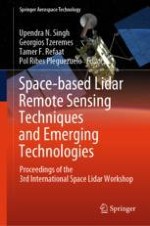This book gathers the latest advances, innovations, and applications in the field of space lidar missions, techniques, and technologies, as presented at the 3rd International Workshop on Space-Based Lidar Remote Sensing Techniques and Emerging Technologies (LIDAR), held in Milos Island, Greece, on June 18–23, 2023. It covers highly diverse topics such as space-based lidar techniques and methodologies; challenges experienced in space lidar missions; planning of new space earth observation lidar missions, including monitoring of topography, cryosphere, biomass, greenhouse and trace gases clouds, aerosols; exploration lidars, including entry, decent and precision landing, as well as hazard avoidance for Mars & Lunar landers missions; results and plans for simulations, airborne experiments and demonstrations as precursors for space missions; emerging space lidar technologies, particularly in lasers, optics, electronics and detectors as well as space lidar reliability and influencing factors, such as effects of the space environment. Written by leading scientists and technologists from government agencies, industries and universities, and selected by means of a rigorous international peer-review process, the contributions highlight numerous exciting ideas that will spur novel research directions and foster multidisciplinary collaborations.
